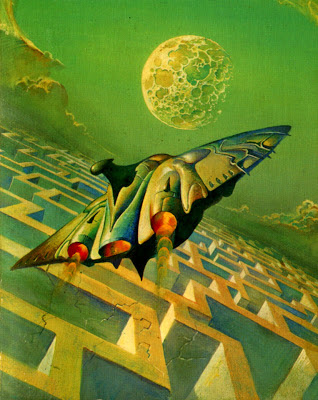The three species of ssraad are differentiated by color and some morphological features, but all are bipeds with broad, wide-mouthed heads and bumpy skins, reminiscent of toads. The species exist in a state of mutual hostility. The two dominant species (the blue and the green) employ the reds in their warfare against other and other sophonts.
 |
| reconstruction of red ssraad image from visual cortex of victim |
RED SSRAAD
No. Appearing: 1-4
AC: 5
HD: 6
Saving Throw: 13
Attack Bonus: +6/+6/+6
Damage: 1d4/1d4 claws, 1d10 bite
Movement: 30’
Morale: 10
Red ssraad at nearly 2.5 m tall and have dull red skin. Though sophont, red ssraad act more like ravening animals than sapient beings. Often only their sadism gives them away. They do not build or create, but are capable of utilizing technology when necessary. Red ssraad are used as shock troops and terror weapons by the greens. They are phenomenal hardy and regenerate 2 hit points a round.
Red ssraad reproduce in an unsual way. They parthenogenetically produce eggs that must incubate with a living host. Ssraad use their hollow tongues to inject eggs (40% chance) into a host on a bite that does damage. Once inside, the egg gestates for 3 weeks. After that, the host falls ill for approximately 24 hours with nausea and abdominal pain before the ssraad larva eats its way out of their body, killing them.










.jpg)







